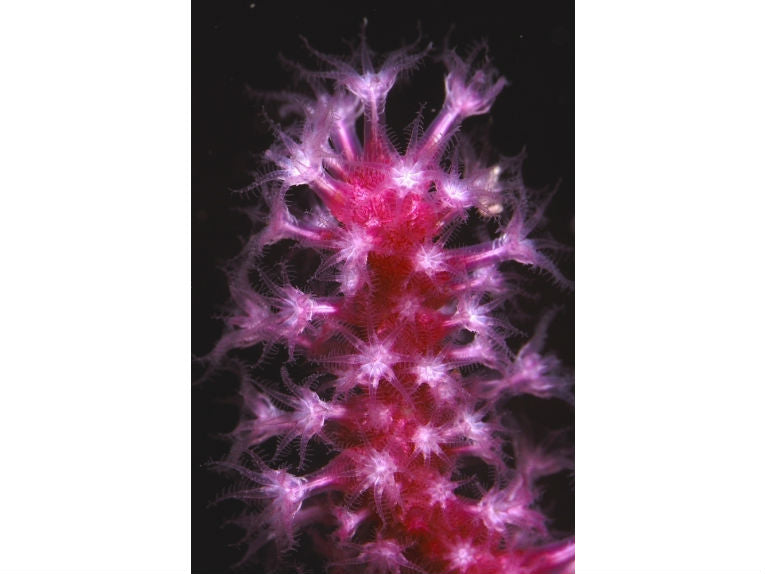Macondo well oil from the Deepwater Horizon blowout has been found on deep-water corals that are 1370 feet down and 11km away. The sensitivity of these mucus-secreting animals means that water currents passing through the community can be assessed with hindsight. Often, no deposits of certain hydrocarbons were left, but these ancient sessile corals preserve their history from a thousand years ago.
The corals in this particular area looked unhealthy and skeletons were free of encrustation, meaning they died recently. The premise that recent waterborne pollution had impacted the community was made, although a coincidence is possible. No other such corals have been impacted. Biomarkers (hopanes in particular) in the floc from the affected organisms also could have originated only the Deepwater Horizon spill.

Healthy deep-water coral communities observed in November 2010 from various sites >20km from the Macondo well (shown as a star on map). (A) Paramuricea sp. type E and Asteroschema sp. at 360 m depth in Garden Banks (GB) 299; (B) Paramuricea sp. type E and Asteroschema sp. at 440 m depth in Mississippi Canyon (MC) 751; (C) Paramuricea sp. type A and Eumunida picta at 530 m depth in Green Canyon (GC) 354; (D) Paramuricea sp. type E and Asteroschema sp., along with a brisingid basket star at 360 m depth in Viosca Knoll (VK) 906; (E) P. biscaya and A. clavigerum at 2,300 m depth in DesotoCanyon (DC) 673; Credit: PNAS
Gorgonian corals such as Paramuricea biscaya were dominant in a central 10x12m area. They were under stress, with excessive mucus production, some skeleton bared and the polyps retracted. Four levels of stress impact were recorded (up to a maximum of 4) in 86% of the corals. During the course of the investigation, only one colony showed signs of some recovery. Otherwise no regrowth or deterioration seemed to occur.
The team looked for positive signs but most indications were bleak for the coral. When the team sampled other animals on the coral, the anemones were found to be bleached in parts, while the ophiurids (brittle stars) were strangely and tightly coiled around their host coral, with some recovering later in the study.
It could be that these deep water corals are more sensitive indicators of pollution than marine sediment cores which have been used to date. Many other such corals in the Gulf of Mexico have not been damaged. Their slow growth rate and the water currents within the Gulf may have protected them so far, with more damage to take place as the hydrocarbons circulate.
Otherwise, only this area has been affected in this way, albeit seriously. Certainly, this alternative to studying marine sediments provides biological indications that could help other organisms as we realise precise effects within the whole ecosystem.
Lead author Helen K. White et al published their study and findings 'Impact of the Deepwater Horizon oil spill on a deep-water coral community in the Gulf of Mexico' in the Proceedings of the National Academy of Sciences (PNAS) this week.










